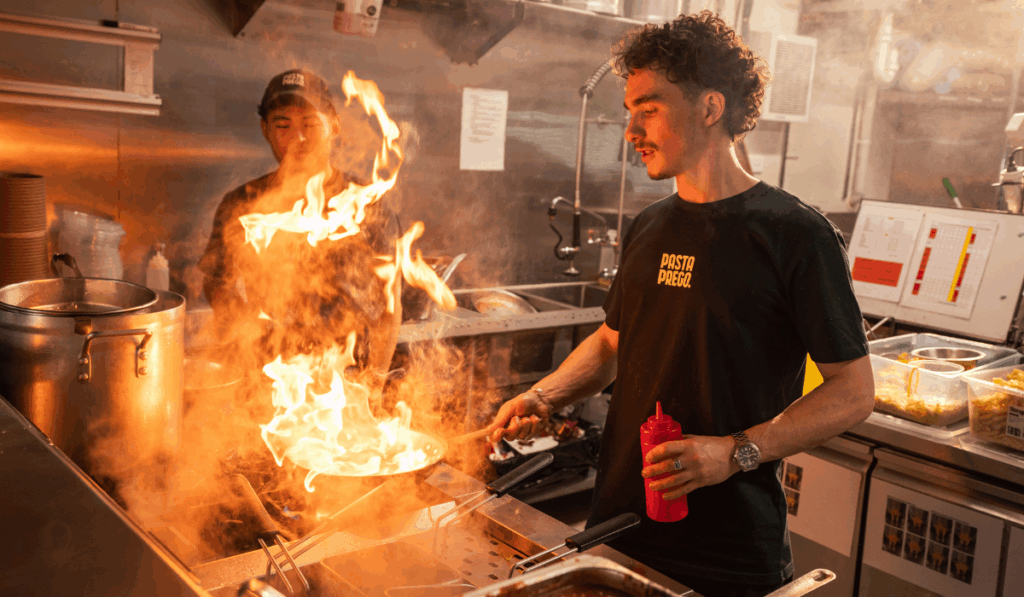Sponsored content provided by Square
Australia’s hospitality industry is in a moment of reinvention. With rising costs, fickle guests and relentless competition, simply plating up good food isn’t enough. For restaurants to thrive in 2025, they need to think like retailers, brand builders, experienced curators and community managers – all while running on razor-thin margins.
In a new video series called In Service, produced by Square, the people behind some of the most compelling hospo ventures in the country offer insights and advice that has helped them stand out from the crowd. From neighbourhood cafes to home-based fine dining, these business owners aren’t just surviving – they’re innovating in ways that may surprise you.
Here are some of the smartest strategies they’re deploying – and why they matter.
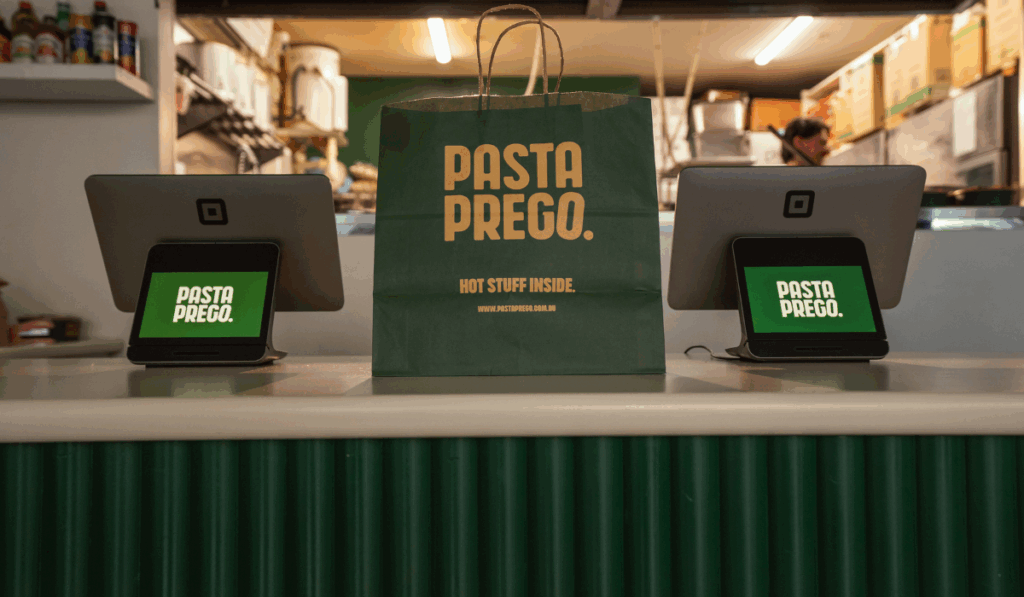
1. Diversify Beyond the Dining Room
Ragazzi started as a sit-down Italian venue in Sydney known for housemade pasta, wine-friendly dishes and casual yet refined service. But they stumbled onto their next big idea during the pandemic. What began as a stopgap – packaging fresh pasta kits to keep staff on the books – quickly became a smart second act. Fabbrica was born.
“We started making pasta packs to keep staff employed during COVID,” says Executive Chef Scott McComas-Williams. “Then we realised we had something that could actually scale.”
Together with General Manager Marlon Kigonya, they built Fabbrica into a mighty retail operation. Today, their pasta and sauce packs are stocked at Woolworths Metro stores across the country. Their central production kitchen supports everything from partnerships with OpenAir Cinema events to consistent service across their venues. The Fabbrica brand also has a brick-and-mortar presence with several pasta bars and bread shops throughout greater Sydney, in a hybrid model that marries hospitality with wholesale and e-commerce.
But none of this came easy. “Retail is unforgiving,” Scott says. “You need shelf life. You need packaging. You can’t just toss a product out there and see how it goes.”
The lesson: a restaurant can be more than a dining room – but only with careful planning, brand clarity and the willingness to learn a new business.
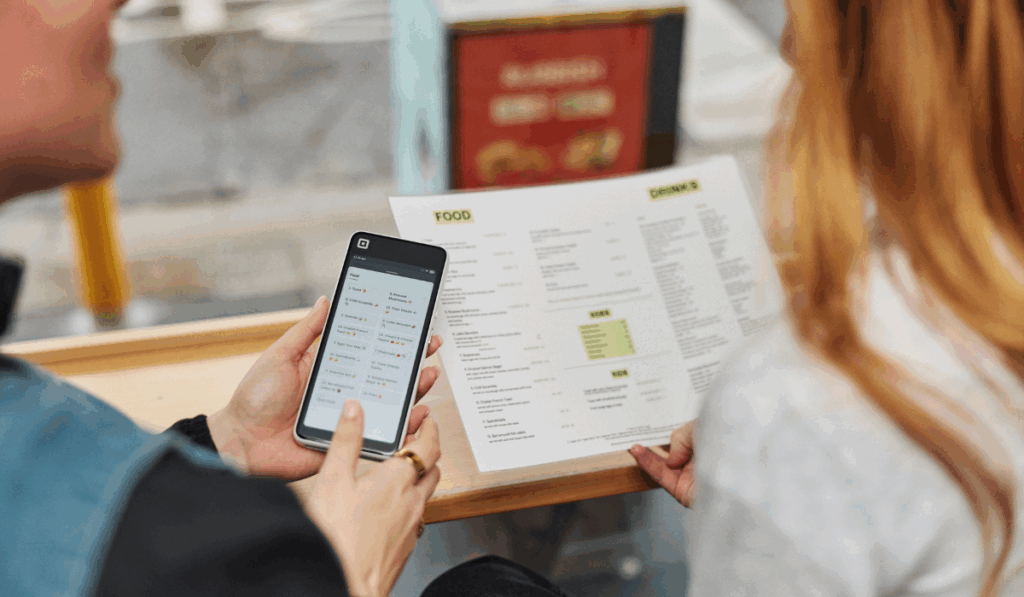
2. Design for Strategy, Not Just Style
Good food might bring guests through the door – but what makes them stay is often less tangible. The vibe. The way a server moves between tables. Whether the sound of the espresso machine overpowers a conversation.
That’s the realm of interior design firm Tom Mark Henry, helmed by Director Cushla McFadden with offices in Sydney and Brisbane. Her work spans restaurants, hotels and bars, but the philosophy is consistent: design must serve both emotion and efficiency.
“Designing a restaurant is about workflow as much as it is about mood,” Cushla says.
That might look like creating surprise-and-delight moments – a window into a dry-ageing room, or the placement of a host desk that guides the flow of service. But it also means designing for the realities of modern venues: multi-purpose spaces, flexible layouts and mobile point-of-sale terminals.
Cafe operator Josh Edwards brings a similar mindset to his three Calibrate Coffee venues in Sydney. Over the years, he’s refined his layouts to serve both staff and guest comfort. A central bench through the middle of the cafe allows staff to circulate easily, under-seat storage saves trips to the storeroom, and self-serve water stations reduce labour without compromising service.
“It’s not just about aesthetics or workflow – it’s about how people feel when they walk in,” says Josh.
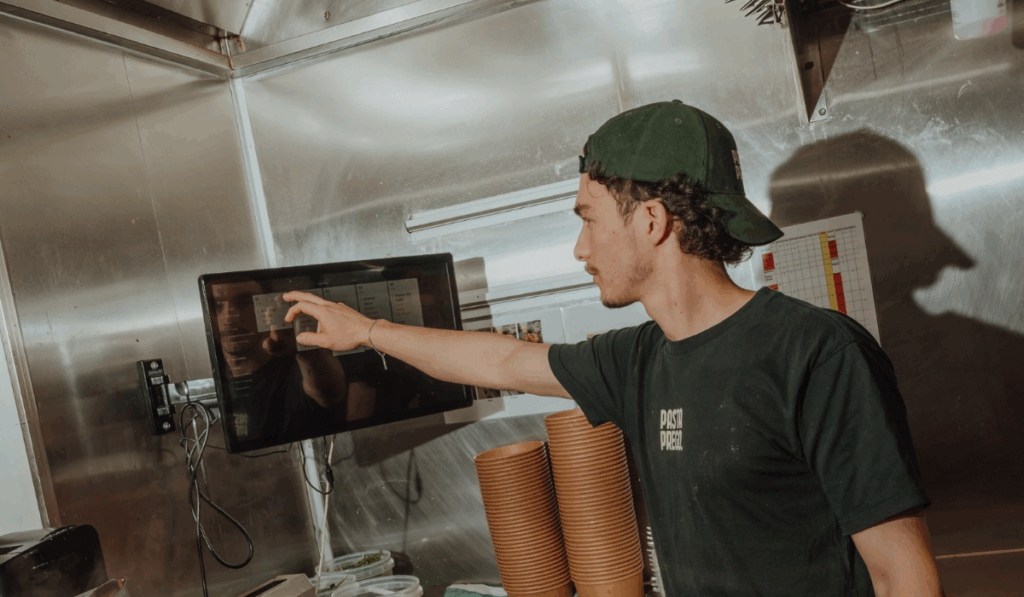
3. Have a Strong POV on Hospitality – and Stick to It
Bar Copains in Sydney walks a careful line between casual and curated. Led by Morgan McGlone – who also co-founded Belles Hot Chicken – Bar Copains is wine-forward with restaurant sensibilities, and isn’t afraid to draw boundaries to create their vision.
“We wanted to create a space that felt adult and intentional,” Morgan says. “You can come in for a Monday night wine and not break the bank, or go big with a back-vintage.”
Instead of forcing big groups into set menus, they introduced an $85 per-head minimum spend – flexible, but fair. Instead of overbooking, half the room remains available for walk-ins. And while kids are welcome in some areas, others are kept child-free.
This mindset carries into the kitchen. Staff are trained with a fine-dining mentality, even down to how they seal and label containers. “Cutting tape, not tearing it, sounds small,” says Morgan, “but it sets a tone of precision.”
For Morgan and his team, it all comes down to expectation management: for staff, for guests, and for the room itself.
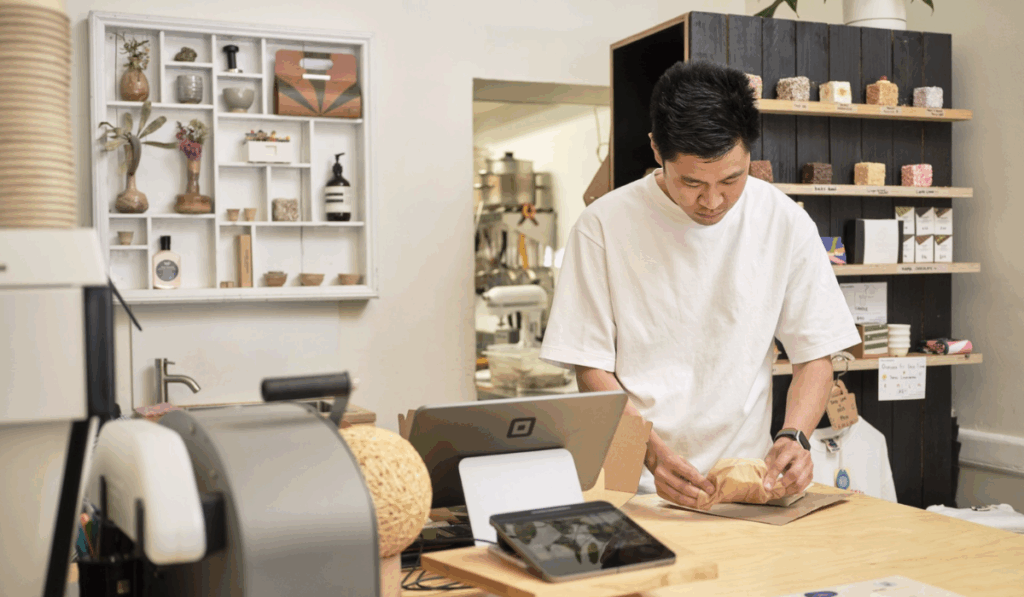
4. Stay Small if You Want To
While many dream of scaling up, some operators succeed by keeping things small.
On the outskirts of Melbourne, CHAE is a Korean fine-dining experience run from the home of chef Jung Eun Chae and her partner Yoora Yoon. They serve just six guests at a time, but there’s a waitlist in the thousands. And they accomplish this by focusing not on scale, but on intimacy, authenticity and craft.
“Our style of cooking and fermentation takes time and space,” Chae says. “We only open on weekends. The rest of the week is for prep.”
Their process involves traditional fermentation techniques and house-grown produce, all made and served from their own kitchen. Guests dine steps away from where their sauces were jarred, and return diners are rewarded with exclusive Sunday seatings. The business is as much about lifestyle and values as it is about hospitality.
“It’s not scalable,” says Yoon. “But it’s sustainable for us.”
Their story is proof that small, focused models can thrive – especially when paired with personal storytelling and deep community building.

Get More Advice from Those Doing the Work
These business owners aren’t speaking in hypotheticals – they’re in the kitchen, on the bar floor, fielding customer feedback in real-time. What unites them is a commitment to doing things differently: breaking from tired industry norms and embracing ideas that reflect their values, their teams and their customers.
Whether that means refining a pasta pack for supermarket shelves, building a six-seat fermentation haven, or designing the perfect workflow for a Saturday brunch rush, the message is clear. Success in modern hospitality requires not just resilience, but creativity.
Want to hear more from these operators? Watch the full In Service video series at Square’s website.

